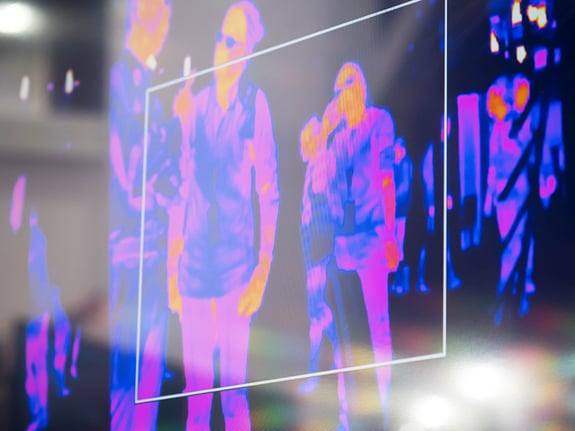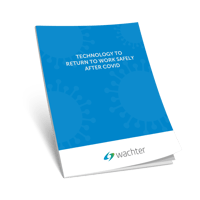Temperature Testing is Pandemic Technology that can Slow COVID-19 Spread in Businesses
Since COVID-19 is such a highly contagious Coronavirus, it’s crucial to have Americans stay at least six feet apart from others and to stay quarantined at home if they have had exposure to someone with a probable or confirmed case.
The latest news regarding COVID-19 is optimistic as states are looking to reopen their economies. Businesses that have had to close their doors to the public are welcoming the idea of reopening, but with some concerns — especially businesses with aisles and smaller spaces. And what about critical infrastructure businesses that are already open, with employees working in their facilities right now?
One major concern is how to manage the testing of employee temperatures. Under the current Centers for Disease Control and Prevention (CDC) guidelines, employers are required to measure employee temperatures before entering the workplace if the employee may have had exposure to someone with suspected or confirmed COVID-19.
Testing Employee's Temperatures is a Return to Work Solution for Slowing COVID-19
As states allow nonessential businesses to reopen, employers may be required to test the temperatures of employees before they start work each day. States like Pennsylvania are enforcing temperature screening policies for businesses.
Governor Tom Wolf’s order regarding businesses with in-person operations that they are required to implement temperature screenings when an employee may have had exposure to a person with a probable or confirmed case of COVID-19.
The Governor’s order also applies to employees who have an elevated temperature of 100.4 degrees Fahrenheit or higher, and those employees must be sent home.
Currently, states are beginning to meet with their own Coronavirus task forces and with other neighboring governors to effectively and safely allow businesses to reopen. Pennsylvania is part of a seven-state coalition including New York, New Jersey, Connecticut, Delaware, Rhode Island, and Massachusetts looking to reopen their economies. This multi-state council includes one health expert, one economic development expert, and the Chiefs of Staff from each state.
Not only are coalitions like this Northeastern council focused on allowing businesses to reopen, but are focused on limiting the spread amongst customers. A major concern shared between business owners and Governors is keeping customers safe and healthy at each business they visit.
North Carolina’s Governor Roy Cooper signed an order effective on April 13, 2020 that all retail establishments that are allowed to operate must follow a strict “Emergency Maximum Occupancy.” This means that businesses can have no more than 20 percent of the stated fire capacity of customers, or five customers for every 1,000 square feet of the retail location’s total square footage, including non-customer-facing portions. If this Emergency Maximum Occupancy is reached, then the business must stop new customers from entering until other customers leave the location.
One retailer in Connecticut, LaBonne’s Markets, is also taking customers’ temperatures to mitigate the spread of COVID-19. While there has not been an official decision from government agencies, state, or federal governments on taking temperatures of customers or visitors who enter a business, employers can screen their employees for a temperature reading.
Both the CDC and Equal Employment Opportunity Commission have guidelines saying that employers may take employee temperatures. The CDC says screening employees for a temperature reading is an optional strategy employers can use. In addition to this, the agency still requires businesses to follow social distancing safety guidelines.
As states, businesses, and customers look to have the economy reopen and some sort of normalcy return, cautious optimism remains for the foreseeable future. Employers may still ask employees to take a temperature reading. Employees and customers may still wear face masks and gloves. Customers may still be wary of being closer than six feet from another person.
Keep Employees Safe with Pandemic Technology that Detects Temperatures
As we all navigate a new reality, facial detection technology could be the key to keeping employees and customers healthy. TempWatch allows businesses to check real-time temperatures of employees, customers, vendors, and anyone else who wants to enter the location.
TempWatch taps into AI and thermal technologies to detect temperatures accurately to 1/10th of a degree. Businesses can detect elevated temperatures of any person entering their facility, allowing them to turn away individuals with elevated temperatures.
TempWatch serves as an additional instrument to allow you to keep anyone who enters your location safe and mitigate the spread of COVID-19 and other illnesses that cause elevated temperatures.



